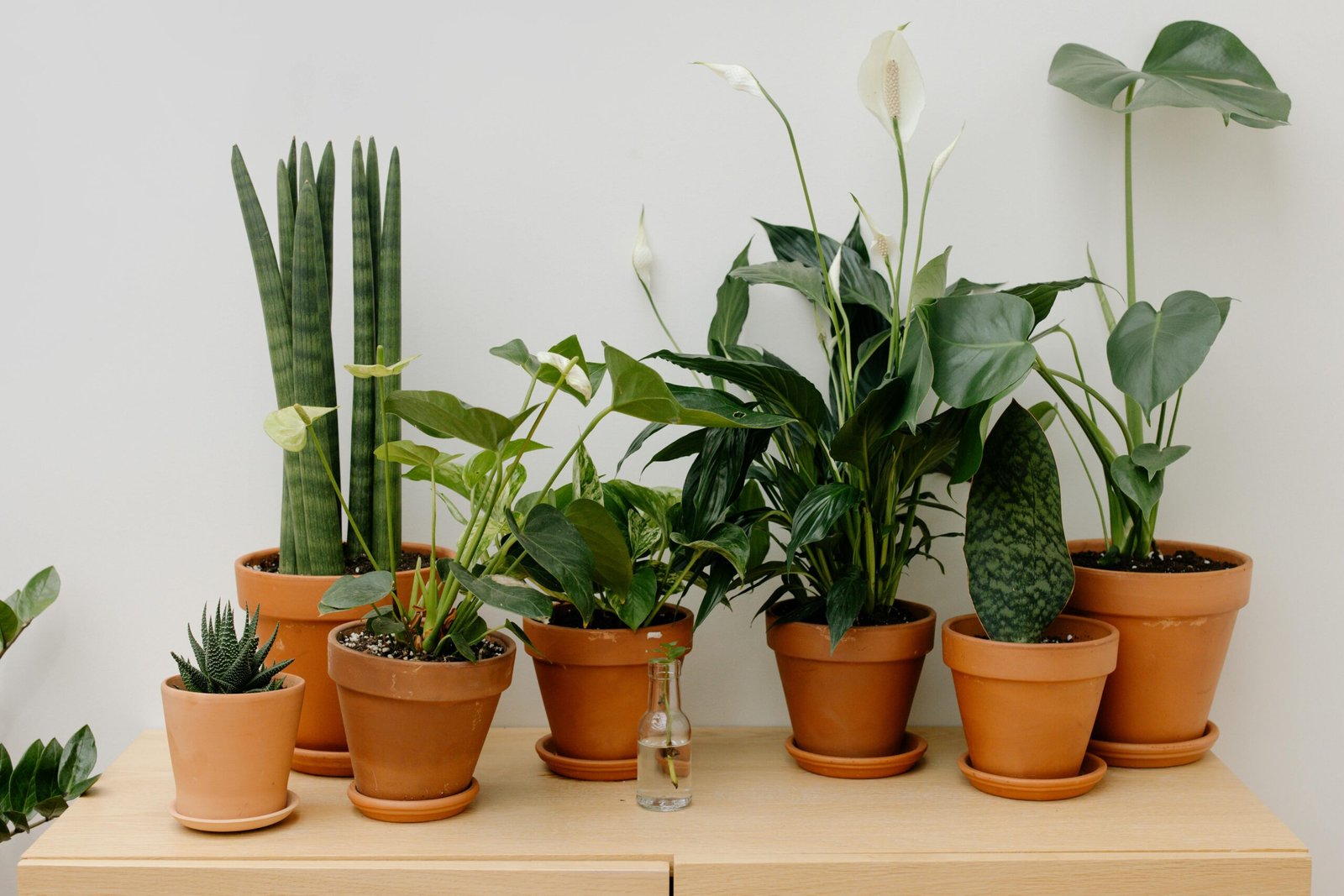Your Complete Guide to Thriving Succulents in Dry Indoor Spaces
If you’ve ever tried to grow houseplants in an apartment with dry air, you probably know the struggle. You water them, move them around, maybe even talk to them—and yet they still wither. The truth is, many popular houseplants crave humidity, something that’s often lacking indoors, especially in homes with central heating or air conditioning.
But here’s the good news: succulents love dry air. In fact, many of them not only tolerate low humidity but absolutely thrive in it. That makes them perfect for apartments, offices, or anywhere the air feels more like a desert than a jungle.
In this guide, you’ll meet ten of the best low humidity succulents, understand why they’re such rockstars in dry environments, and learn how to care for them like a pro—even if you’re brand new to plants.
Why Succulents Are Perfect for Low-Humidity Homes
Succulents are built for survival. Most originate from arid deserts, rocky cliffsides, or high-elevation plateaus where the air is dry, rain is scarce, and the sun is intense. Over time, they developed clever ways to store water and protect themselves from evaporation.
These traits make them ideal indoor plants, especially for:
- Apartments with AC or heaters
- Homes in dry climates
- People who forget to water (no shame!)
- Beginner plant lovers
They’re also stunning. From geometric rosettes to trailing pearls and fuzzy textures, succulents bring natural charm without the high maintenance.
What Makes a Succulent Low-Humidity Friendly?
Not all succulents are the same. Some come from humid rainforests and prefer moisture. But most true succulents, especially desert types, are champions in dry conditions.
The best succulents for low humidity usually have:
- Thick, fleshy leaves or stems that store water
- A waxy or fuzzy surface to reduce evaporation
- Minimal pores (stomata), helping retain moisture
- A natural resistance to dry air
In short, they’re drought experts—and they don’t need misting or extra fuss.
10 Succulents That Survive Low Humidity Like Champs
Here’s a handpicked list of ten superstar succulents perfect for dry indoor air. Each one is easy to grow, beautiful to look at, and forgiving to forgetful owners.
1. Echeveria
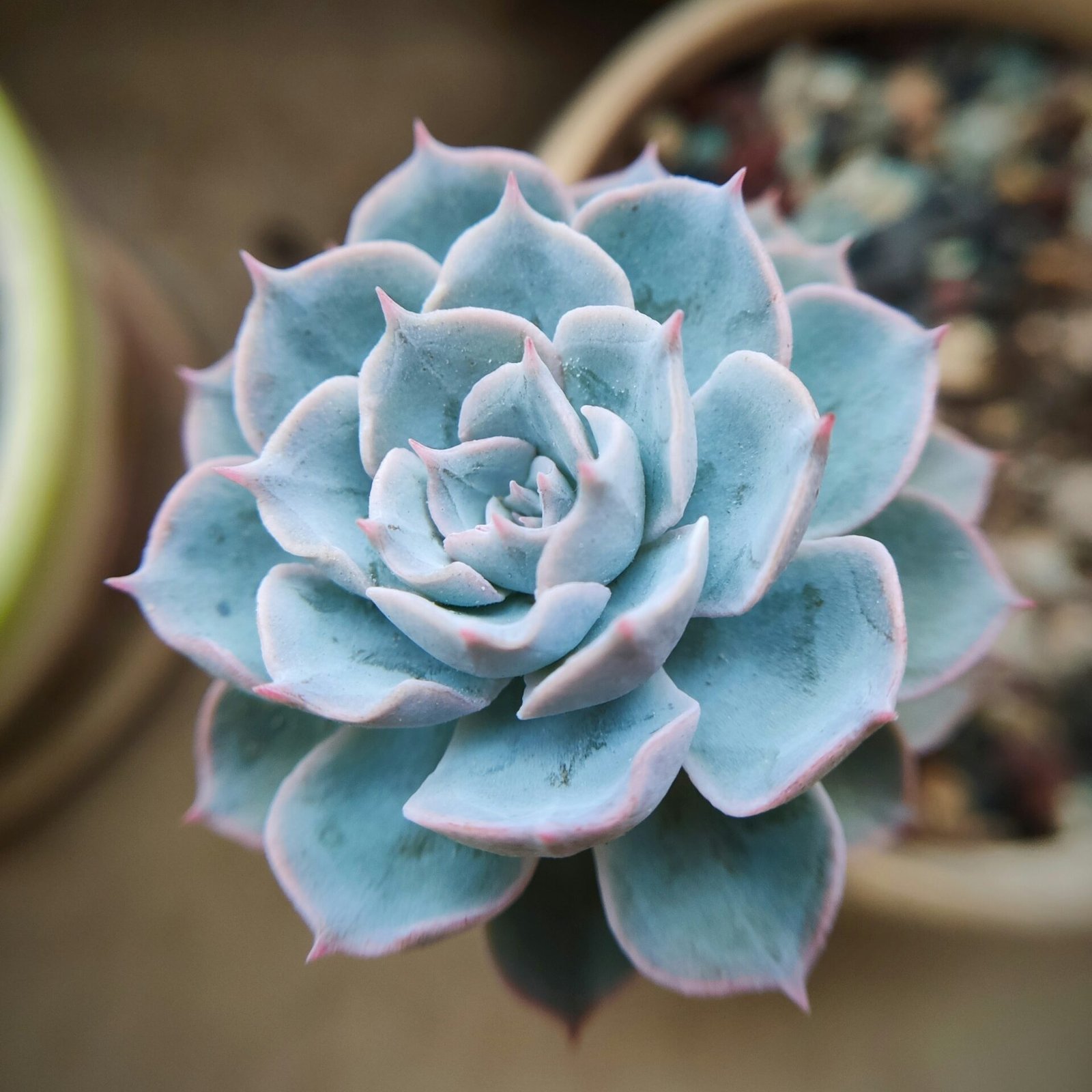
These symmetrical rosette-shaped succulents come in dreamy colors—blues, pinks, purples, and even dusty greens. Some look like flowers made of stone.
Why it thrives: Native to semi-desert climates, Echeveria’s plump leaves are designed to lock in moisture and withstand dry air.
Care tips: Needs lots of bright, indirect sunlight. Water deeply but infrequently, and avoid getting water in the rosette center to prevent rot. Perfect for sunny windowsills or tabletop arrangements.
2. Jade Plant (Crassula ovata)
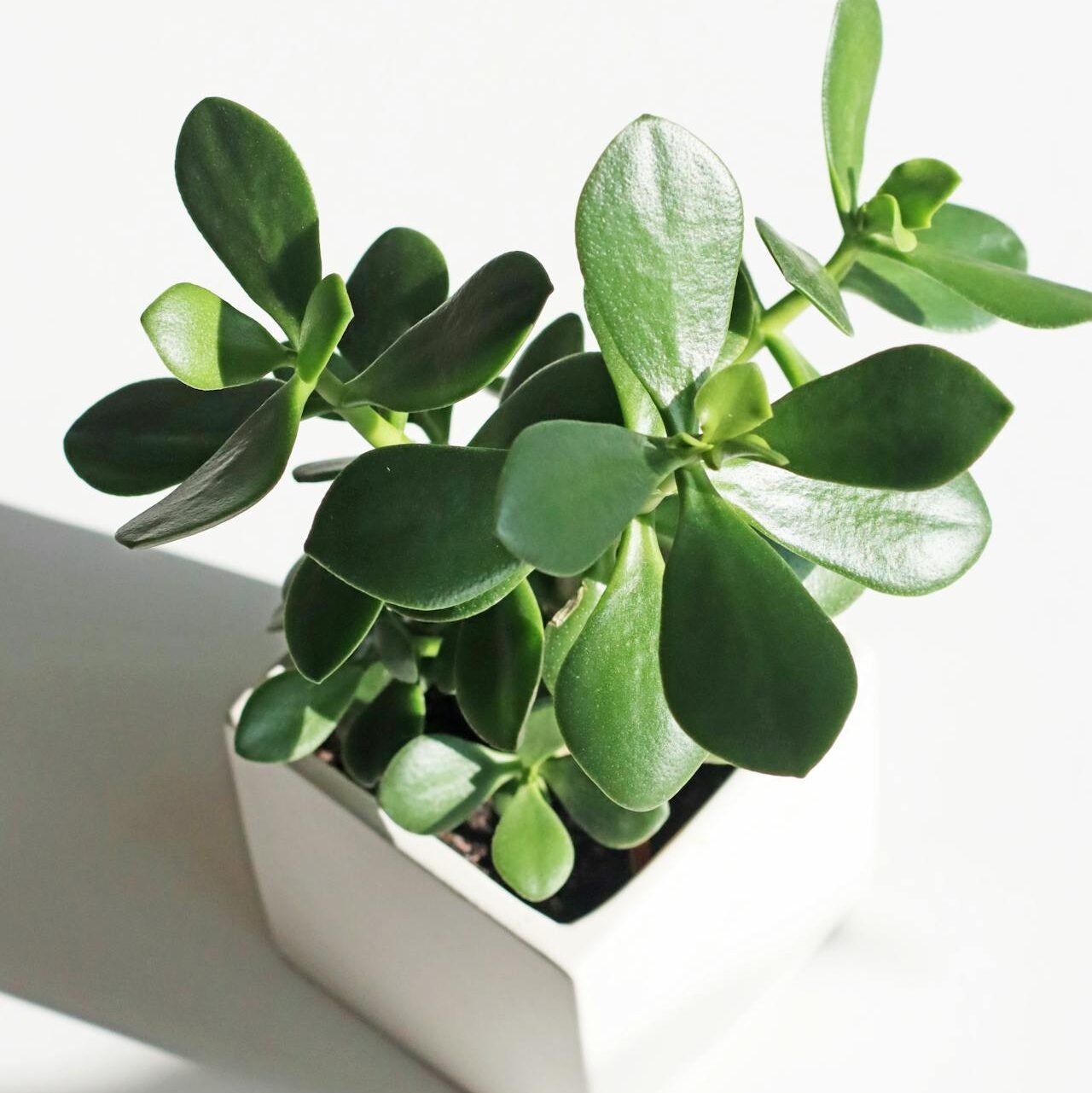
This classic succulent looks like a miniature tree, with thick, woody stems and glossy green leaves. Over time, it grows upright and branched—almost bonsai-like.
Why it thrives: Its thick leaves hold plenty of water, making it perfect for dry indoor environments.
Care tips: Loves a sunny spot but can tolerate some shade. Let soil dry out completely between waterings. Use a heavy pot to keep it from toppling over as it grows taller.
3. Haworthia
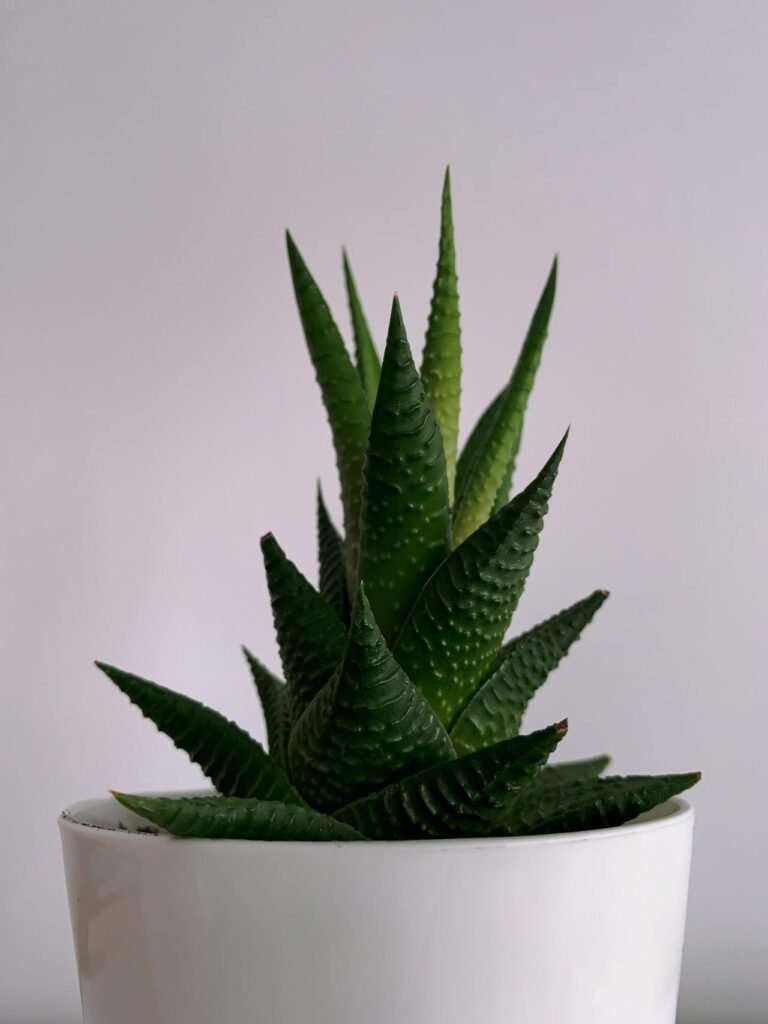
Small but mighty, Haworthia looks a bit like a compact aloe with stripes, windows, or dots. It’s an excellent plant for desks, shelves, or beginner growers.
Why it thrives: Its small size and tough leaves make it well-suited to indoor dry air, and it doesn’t need intense sun.
Care tips: Water sparingly. Great for lower-light conditions. Tolerates neglect like a champ—just don’t drown it.
4. Aloe Vera
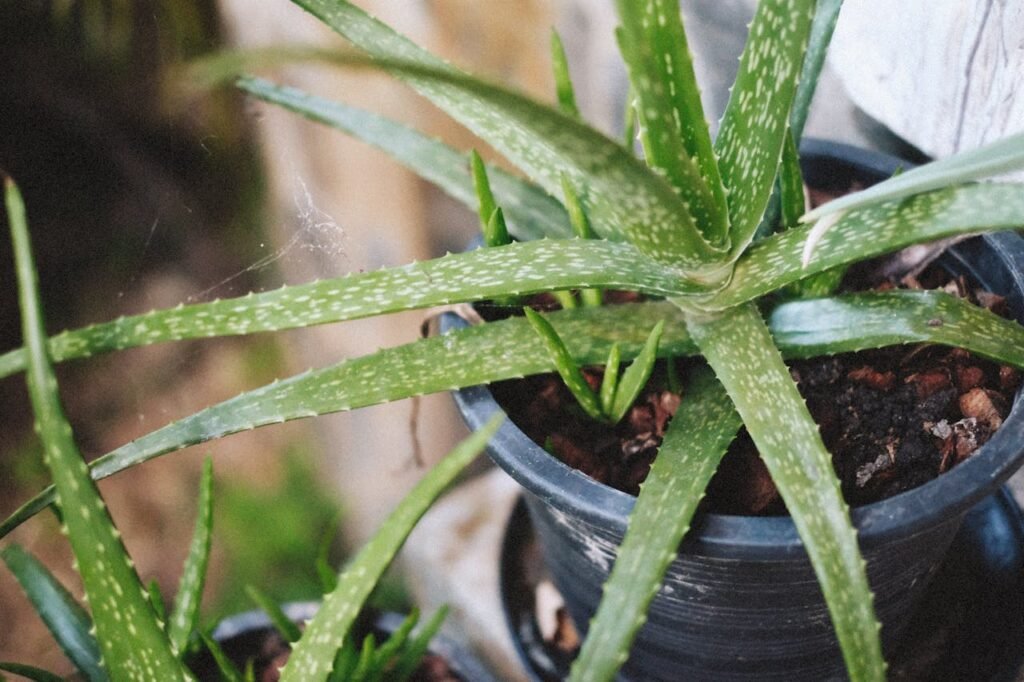
Aloe Vera isn’t just useful for sunburns. It’s also a tall, architectural succulent with thick, upright leaves full of cooling gel.
Why it thrives: Built for harsh desert environments, Aloe holds loads of moisture and prefers things on the dry side.
Care tips: Needs bright light—ideally 6+ hours a day. Water when the soil is completely dry. Keep away from pets—aloe is mildly toxic if ingested.
5. Zebra Plant (Haworthiopsis fasciata)
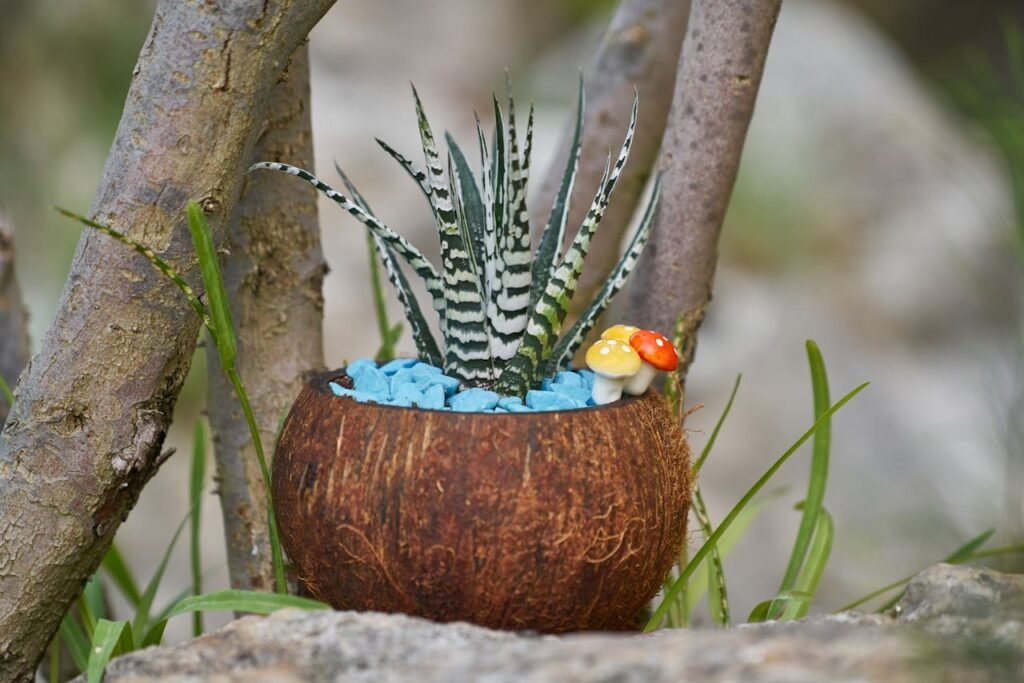
This eye-catching succulent has pointed green leaves with white horizontal stripes, creating a zebra-like appearance.
Why it thrives: Compact, hardy, and fuss-free—it adapts well to dry rooms and less-than-ideal conditions.
Care tips: Likes bright, indirect light. Avoid overwatering. Ideal for small spaces and offices.
6. Panda Plant (Kalanchoe tomentosa)

Description: Soft, fuzzy, and velvety, the Panda Plant has gray-green leaves tipped in brown. Its texture makes it stand out in any collection.
Why it thrives: The fine hairs on its leaves help reduce water loss, making it well-suited to low humidity.
Care tips: Needs plenty of sunlight and very little water. Avoid touching the leaves too much to keep the fuzzy coating intact.
7. Burro’s Tail (Sedum morganianum)

This trailing beauty features thick, tear-shaped leaves along long, drooping stems. It’s a favorite for hanging baskets.
Why it thrives: Stores moisture in every leaf, so it doesn’t mind dry indoor air.
Care tips: Needs bright, indirect sunlight. Let soil dry out completely before watering. Handle gently—its leaves are delicate and fall off easily.
8. String of Pearls (Senecio rowleyanus)

This unique plant looks like a cascading string of green beads. It’s whimsical, modern, and ideal for shelves or hanging pots.
Why it thrives: Each “pearl” acts as a tiny water tank, helping it go long periods without a drink.
Care tips: Needs bright light and well-draining soil. Only water when the pearls start to look slightly shriveled. Not pet-safe—keep out of reach.
9. Crown of Thorns (Euphorbia milii)
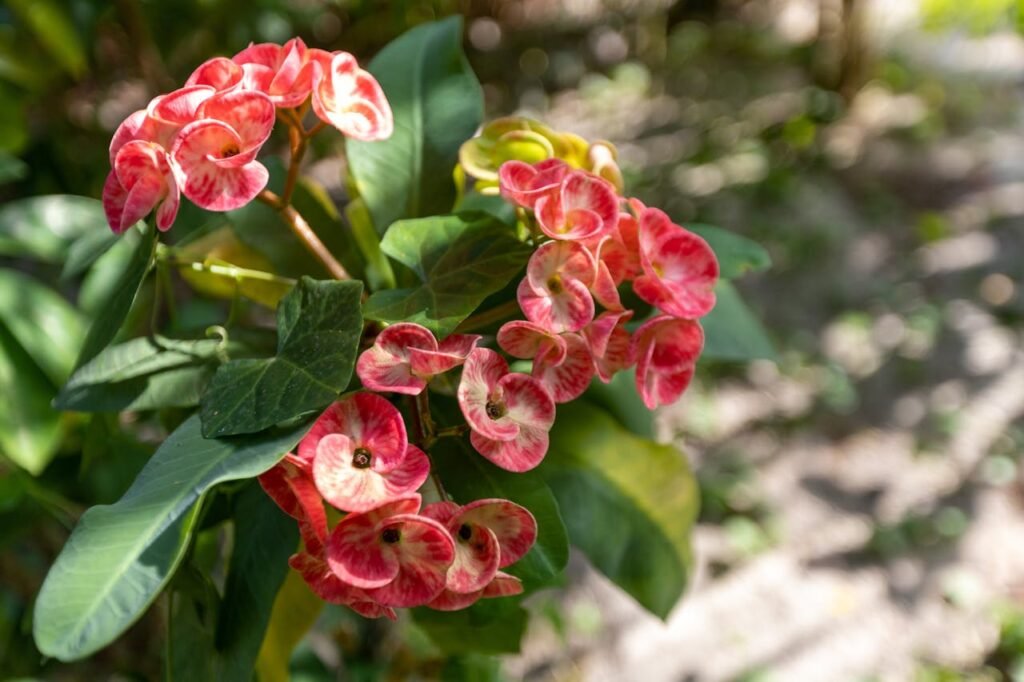
This spiny, flowering succulent can bloom nearly year-round with the right light. It’s bold and colorful.
Why it thrives: Handles heat and dry air with ease. Very low maintenance once established.
Care tips: Needs at least 4–6 hours of sunlight. Water sparingly. Avoid contact with its milky sap—it’s toxic to pets and can irritate skin.
10. Snake Plant (Sansevieria)
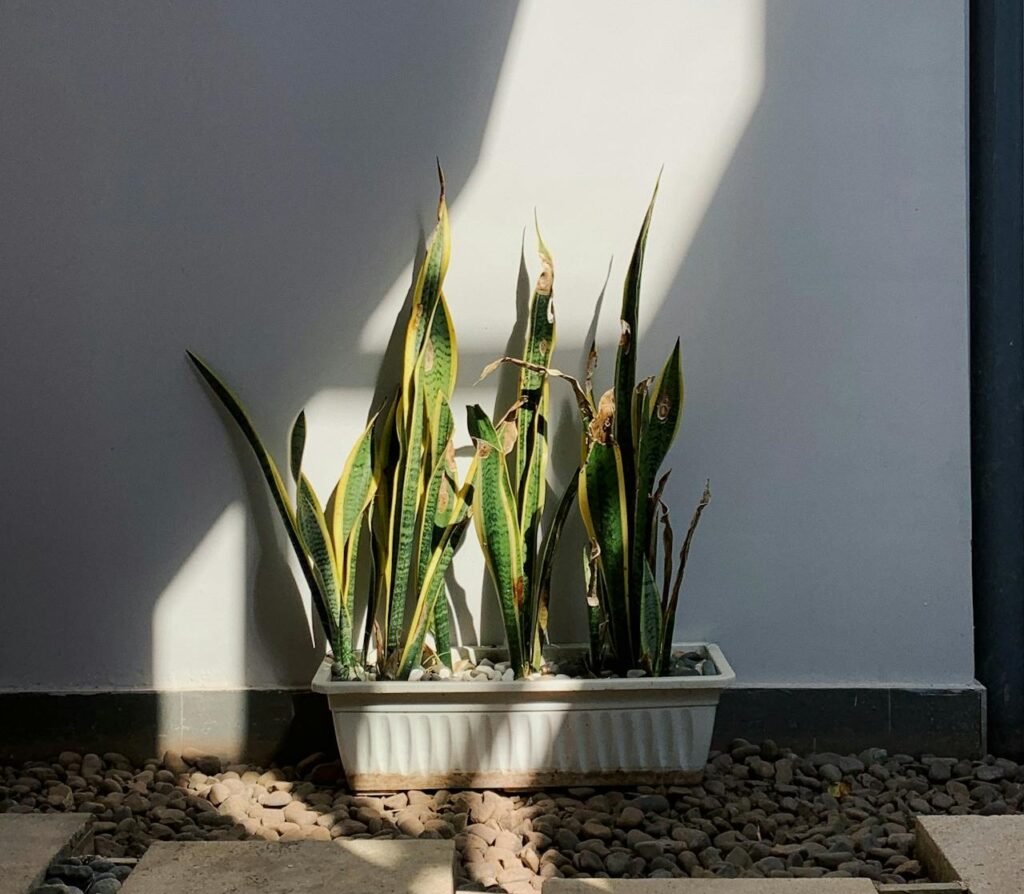
Tall, sword-like leaves that stand upright, often streaked with yellow or silver. It’s nearly indestructible.
Why it thrives: Though not a true succulent, it’s extremely tolerant of low humidity, low light, and infrequent watering.
Care tips: Water every few weeks. Avoid cold drafts. A perfect choice for bedrooms, hallways, or beginners.
How to Care for Succulents in Dry Apartments
Now that you know which succulents thrive in dry air, let’s talk about how to keep them healthy indoors. Even the hardiest plants need the right setup to truly shine.
Lighting Needs
Most succulents love light—and lots of it.
- Best windows: South or west-facing windows provide bright, direct sun.
- Low-light workaround: Use a full-spectrum grow light if your home lacks natural sun.
- Rotate your plants weekly for even growth.
Succulents growing in too little light will stretch out and lose their compact form—a process called etiolation. If they’re leaning or fading, move them to a sunnier spot.
Watering in Low Humidity
Here’s the golden rule: when in doubt, don’t water.
- Always check that soil is 100% dry before watering.
- Use the soak and dry method: water thoroughly, let drain, then leave it alone.
- In dry air, resist the urge to mist—succulents don’t like it.
During winter or in air-conditioned rooms, reduce watering even more. Your plant isn’t growing much and doesn’t need as much hydration.
The Right Soil and Pot
Poor drainage kills more succulents than dry air ever will.
- Use a cactus/succulent soil mix, or make your own (2 parts potting soil, 1 part perlite, 1 part coarse sand or pumice).
- Always use pots with drainage holes.
- Terracotta pots are great—they’re porous and help the soil dry out faster.
Temperature & Humidity Levels
Succulents prefer average indoor temperatures between 65°F–80°F (18°C–27°C). They don’t need added humidity.
- Keep away from cold drafts, radiators, or steam vents.
- A small desk fan can improve airflow, especially if your plant is near other items or walls.
Fertilizing (Light and Occasional)
You don’t need to fertilize often—succulents grow slowly in low humidity.
- Use a diluted succulent fertilizer once a month during spring and summer.
- Skip fertilizing in fall and winter when the plant is dormant or growing slowly.
Styling Succulents in Small Spaces
Succulents aren’t just easy—they’re beautiful decor.
Try:
- A trio of Echeveria in matching pots on a windowsill
- A String of Pearls hanging in a macramé planter
- A bold Aloe Vera as a centerpiece
- Mini Zebra Plants on floating shelves
They bring shape, texture, and calming green vibes—without eating up your space.
Final Thoughts
If you’ve been struggling to keep plants alive in your dry apartment, succulents are the answer. They don’t need a humidifier, daily care, or tropical treatment. What they need is light, dry air, well-draining soil, and your patience.
From soft Panda Plants to architectural Snake Plants and cascading Burro’s Tail, there’s a low-humidity succulent for every room and every lifestyle. Whether you’re a busy professional, a plant newbie, or just someone who forgets to water, these plants make indoor gardening possible—and even joyful.
FAQs
Q1: Do I need to mist my succulents in dry air?
No. Succulents don’t like misting and don’t absorb moisture through their leaves. Misting can actually cause fungal problems.
Q2: What’s the best low humidity succulent for beginners?
Try Haworthia, Jade Plant, or Snake Plant. They’re tough, forgiving, and easy to find.
Q3: Why are my succulent leaves shriveling?
That’s a sign of underwatering—or sometimes, overwatering. Check the soil: dry and crispy means it’s time to water; wet and soft means hold off.
